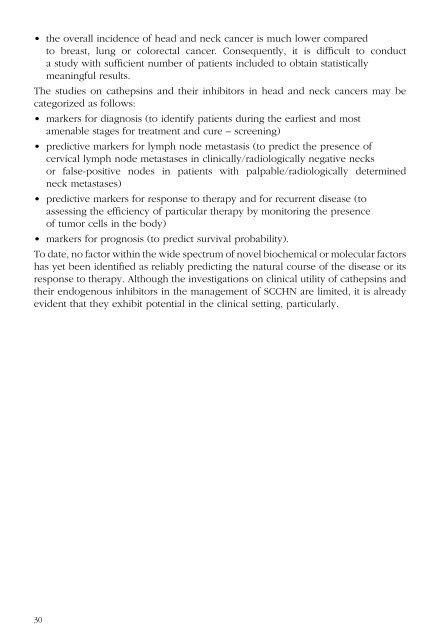You also want an ePaper? Increase the reach of your titles
YUMPU automatically turns print PDFs into web optimized ePapers that Google loves.
• the overall incidence of head and neck cancer is much lower compared<br />
to breast, lung or colorectal cancer. Consequently, it is difficult to conduct<br />
a study with sufficient number of patients included to obtain statistically<br />
meaningful results.<br />
The studies on cathepsins and their inhibitors in head and neck cancers may be<br />
categorized as follows:<br />
• markers for diagnosis (to identify patients during the earliest and most<br />
amenable stages for treatment and cure – screening)<br />
• predictive markers for lymph node metastasis (to predict the presence of<br />
cervical lymph node metastases in clinically/radiologically negative necks<br />
or false-positive nodes in patients with palpable/radiologically determined<br />
neck metastases)<br />
• predictive markers for response to therapy and for recurrent disease (to<br />
assessing the efficiency of particular therapy by monitoring the presence<br />
of tumor cells in the body)<br />
• markers for prognosis (to predict survival probability).<br />
To date, no factor within the wide spectrum of novel biochemical or molecular factors<br />
has yet been identified as reliably predicting the natural course of the disease or its<br />
response to therapy. Although the investigations on clinical utility of cathepsins and<br />
their endogenous inhibitors in the management of SCCHN are limited, it is already<br />
evident that they exhibit potential in the clinical setting, particularly.<br />
30
















